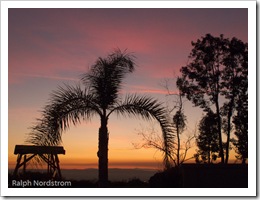Last night we had a beautiful sunset. The sky was baby blue, the clouds were pink and the horizon was golden. I couldn’t resist. So I grabbed my Canon PowerShot G11 and walked over to the neighbor’s front yard where the view is just a bit better. I composed what I thought was an interesting image and snapped a few.
This morning I uploaded them and got to wondering about color saturation in Adobe Photoshop Lightroom. I have a technique I’ve used for years to enhance colors but there are a couple of other techniques I thought I’d like to understand better. The three Lightroom controls are:
- Saturation
- Vibrance
- HSL (the control I use the most)
So, for starters, here’s the original unadjusted image.
 As you can see, the colors are really quite nice. But my recollection of the sunset was that they were a little more saturated, more intense.
As you can see, the colors are really quite nice. But my recollection of the sunset was that they were a little more saturated, more intense.
Continue reading “Color Saturation in Lightroom”
(4206)
